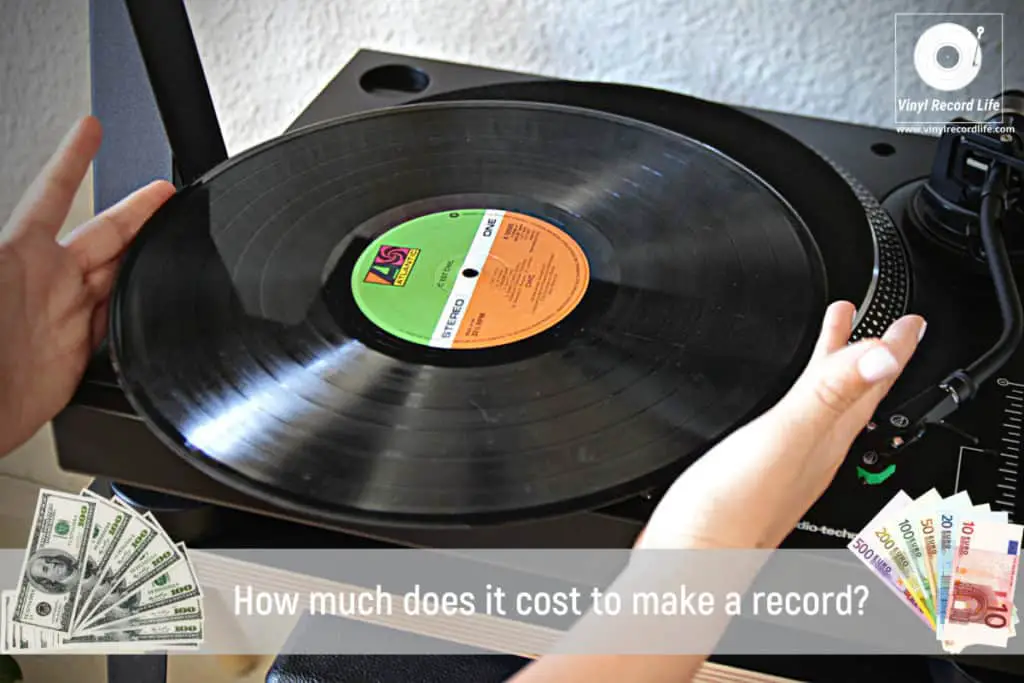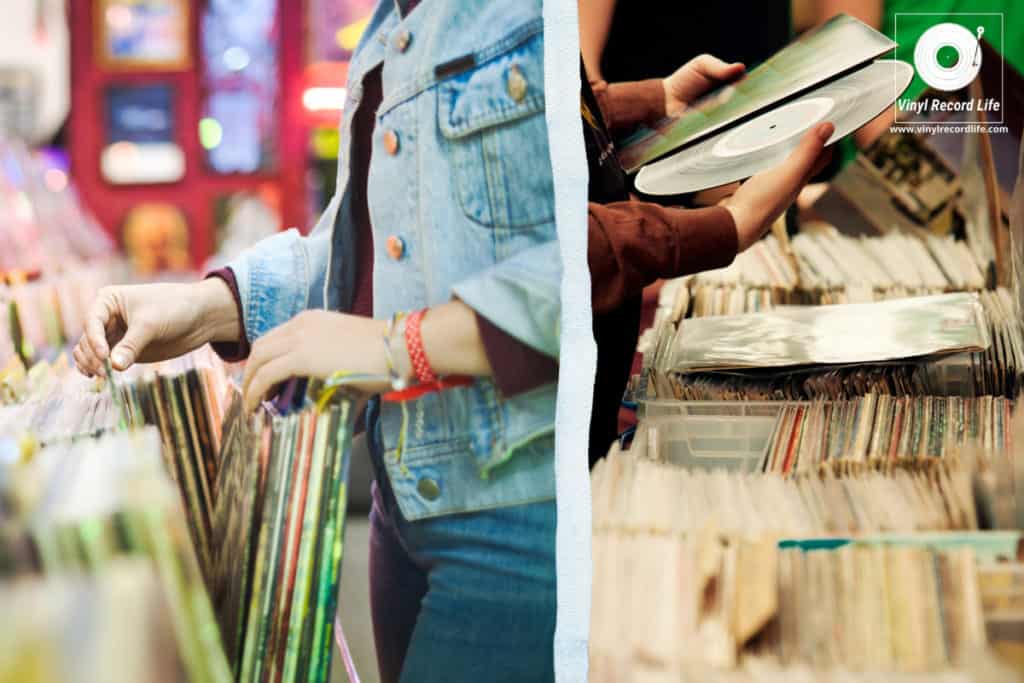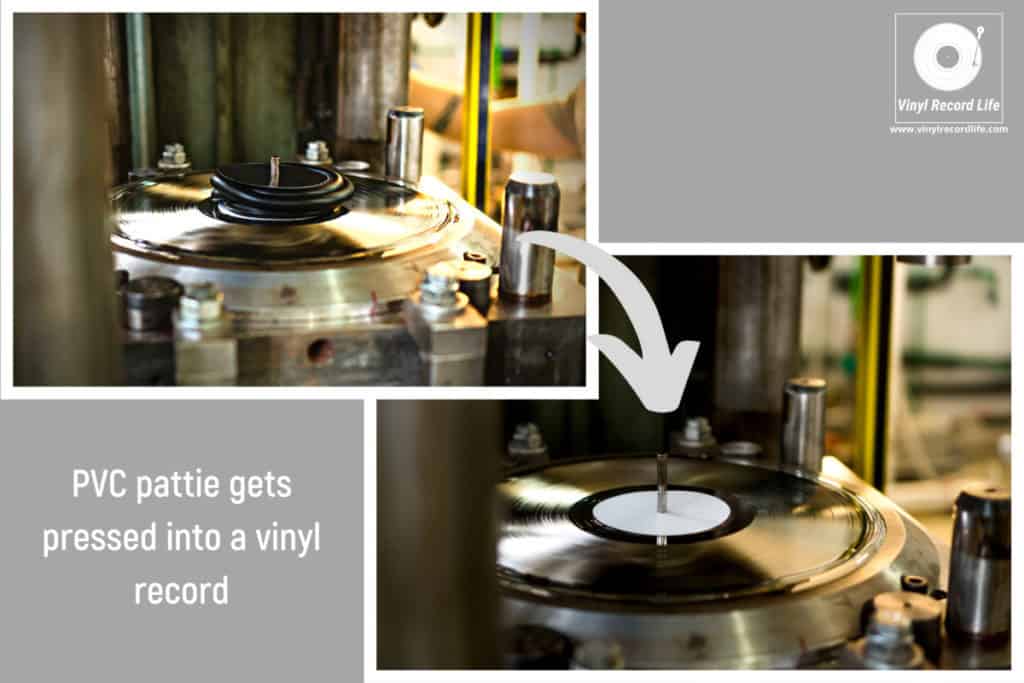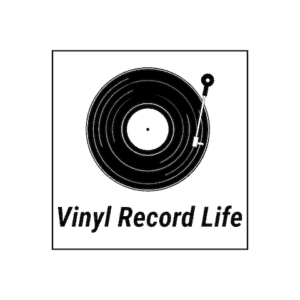
Ever been listening to one of your favorite records and wondered: How much does a vinyl record cost to produce?
It’s something that’s crossed my mind more than once, and while I always had a rough idea of the general cost involved, my intrigue was renewed when speaking to a friend who plays in a group.
They told me they were planning to do a run of 100 vinyls of their band’s next EP, and we discussed the costs involved and how many records they’d need to sell and at what price to break even.
The average cost to make 100 vinyl records is $1225. Most record pressing plants will not produce a run of less than 100 records, to ensure a return on investment of initial set-up costs. The cost of pressing a record can rise when colored labelling, artwork and various other factors are modified.
These various other factors can make the overall cost either lower or higher, but the average of $1225 for a run of 100 records is based on the most economical options.
To help understand how and why the overall cost can vary, I’ve broken down the various stages of the record pressing process in this post and how they can influence the overall cost of pressing a record.
We’ll also get into the factors that can have a real influence on the cost of pressing a vinyl record in this article, but first up let’s look at breaking down the actual cost itself.
How Much Does the Record Pressing Process Cost?
To give a clear idea of the cost of pressing a vinyl record, we got detailed quotes with a breakdown of overall cost from four different plants.
In the following table, we’ve put the average cost across the four quotes we received for each element, for a stock/standard pressing of a two-sided 12” record with plain labeling, sleeves and jackets.
| Cost element | Average cost | Example cost for a pressing of 100 records |
| Lacquer cutting (per side) | $190 | $380 |
| Plating (per side, 2-step) | $170 | $340 |
| Center labels (per label) | $0.05 | $5 |
| Inner sleeves (plain white) | $0.15 | $15 |
| Jackets (stock black or white) | $0.75 | $75 |
| Pressing set-up fee | $190 | $190 |
| Test pressing (5) | $65 | $65 |
| 140g black vinyl record (per unit) | $1.55 | $155 |
| Total demonstrative cost for pressing run of 100 records: | $1225 |
So, the average cost to press 100 12” vinyl records is $1225.
This cost can rise considerably when any of the cost elements listed in the above table are adjusted. More information on how these costs can fluctuate is in the final section of this article.

The Steps Involved in Pressing a Vinyl Record
To help understand what’s really involved in pressing a vinyl record, and how the various stages affect the overall cost, let’s take an overview of the process.
Step 1: Pre-Master the Audio
Before the record is even pressed, the audio needs to be mastered properly so that it’s ready to be committed to vinyl.
Mastering gets the audio ready for the next step of the process – the vinyl lacquer cutting stage – and there are various requirements of the mastered audio source file to ensure the best possible vinyl pressing is achieved.
The standard format for a vinyl master file is 24-bit 96kHz, as either a WAV or AIFF. This is the ideal format – others can work, right “down” to CD quality audio at 16-bit 44.1kHz, but MP3 files just don’t cut it as a master file for cutting vinyl.
For more on the debate around whether digital or vinyl is better, check out our post here.
Step 2: Cutting the Music onto a Lacquer
Once the audio’s been mastered and is ready, an engineer will then use a lathe to cut the lacquer disc of the audio recording. This lacquer serves as the mold for the next step.
Step 3: A Metal Stamper is Created
The lacquer is then treated with various metals and chemicals, which fuse to solidify and create a metal stamper in the mold of the lacquer.
Step 4: Test Pressings as a Quality Check
With this metal stamper a test pressing of the record is usually run, and the recording is reviewed by the engineer, artist etc to ensure the recording is faithful to the original before a full run is pressed, as well as catch any sound anomalies or flaws.
Step 5: The Vinyl is Produced
This is the step where the actual vinyl record is produced, and the music pressed onto it.
PVC pellets are molded into small “patties”, and the metal stamper is then pressed down, flattening these patties and imprinting the music onto them to create the record.
For more on what a record is actually made from, check out our This Is What Vinyl Records Are Made Of post!

What Factors Influence the Cost of Pressing a Record?
There are a few factors that can impact the final overall cost of pressing a vinyl record.
The Quantity of Records in the Pressing Run
Pretty much any record pressing plant will have a minimum run requirement, and this is usually 100 records.
It all comes down to set-up costs – producing fewer than 100 records after investing in cutting the lacquer, creating the metal stamper, running test pressings etc just doesn’t make much sense for the plant or the customer.
Logically, the larger the quantity of record in the pressing run, the more expensive the final cost becomes, although there is an economy of scale insofar that the per-unit cost of each record will actually become considerably cheaper the larger the run.
For example, pressing a run of 1000 records using the cost outline in our table above would cost $3475, compared to the $1225 for 100 records.
So it’s easy to see that while you’d be pressing 10x as many records, the cost is just under 3x as expensive, thus making larger runs more economical.
The Weight of Vinyl Impacts Cost
Going for the weightier 180g vinyl pressing over the regular 135g will bring the cost up.
180g records are considered by some to be more durable and their sound quality has been touted as being better, although this is also a claim that’s caused a lot of debate as to its veracity.
In general, we found that using 180g vinyl over 135g doubled the per unit cost for each record from an average of $1.55 to an average of around $3.
The Number of Sides of the Record Being Pressed
Some will opt to only have music on one side of the record, but the norm will be to have music on both sides.
Having music on both sides of the record will mean the cost will rise as the lacquers and metal plates produced will be doubled, but as it’s much more common to press music on both sides of the record this cost is par for the course.
Labels, Jackets and Sleeves Affect Cost
A plain white center label will be cheaper than a printed color label, likewise a plain white inner sleeve will bring the overall production cost down as opposed to having a printed sleeve with color.
In our cost quotes, a full color center label averaged $0.50 vs $0.05 for a plain white one. Full color printed inner sleeves averaged a cost of $0.70 vs $0.15 for plain white ones that we opted for in our example cost table.
It’s the same for jackets. If the run includes a basic white or black jacket then this will keep the overall cost down (as per the $0.75 per unit example in our table).
Opting for a printed jacket with just one color can raise the cost considerably, and having multiple colors will only see that rise. We saw an average quote of $1.75 for a full color printed jacket.
Going all out and having a color gatefold jacket can easily double – or even triple – the final overall cost of this line in the breakdown. We saw an average cost of $4 per jacket across our quotes.
Colored Vinyl Will Up the Cost
Novelty factors such as colored, glow in the dark or picture vinyl will also be more expensive and drive the overall run cost up considerably.
